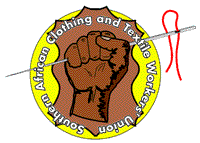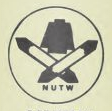Related Research Articles

The World Federation of Trade Unions (WFTU) is an international federation of trade unions established in 1945. Founded in the immediate aftermath of World War Two, the organization built on the pre-war legacy of the International Federation of Trade Unions as a single structure for trade unions world-wide. With the emergence of the Cold War in the late 1940s, the WFTU splintered, with most trade unions from the Western-aligned countries leaving and creating the International Confederation of Free Trade Unions (ICFTU) in 1949. Throughout the Cold War, membership of the WFTU was made up predominantly of trade unions from the Soviet-aligned and non-aligned countries. However, there were notable exceptions to this, such as the Yugoslav and Chinese unions, which departed following the Tito-Stalin and Sino-Soviet splits, respectively, or the French CGT and Italian CGIL unions, who were members. With the end of the Cold War and the dissolution of the Soviet Union, the WFTU lost the largest portion of its membership and financial support. Since the start of the 2000s, the organization shifted headquarters to Athens and recruited new members, claiming to have grown from representing 48 million workers in 2005 to 105 million in 2022.

The International Textile, Garment and Leather Workers' Federation (ITGLWF) was a global union federation. In 2005 it had 217 member organizations in 110 countries, representing a combined membership of over 10 million workers.

The Southern African Clothing and Textile Workers' Union (SACTWU) is the biggest union in the South African clothing, textile, footwear and leather industry, with more than 100 000 members. It negotiates wages for the vast majority of workers in these industries in South Africa, with the collective bargaining agreements covering over 150 000 workers.
Community is a British trade union which formed in 2004. The union represents workers in a diverse range of sectors, including iron and steel, justice and custodial, domestic appliance manufacturing, textiles and footwear, road transport, betting, the third sector, education and early years as well as the self-employed.

The South African Agricultural Plantation and Allied Workers Union (SAAPAWU) was a trade union representing agricultural and plantation workers in South Africa.

Ebrahim Patel is a South African cabinet minister, who holds the position of Minister of Trade, Industry and Competition. He previously served as Minister of Economic Development from 2009 to 2019.
The United Hatters, Cap and Millinery Workers International Union (1934–1983), also known by acronyms including UHCMW, U.H.C. & M.W.I.U. and UHC & MWIU, was a 20th-century American labor union.
The General Council of the Trades Union Congress is an elected body which is responsible for carrying out the policies agreed at the annual British Trade Union Congresses (TUC).
Lucy Buyaphi Mvubelo was a South African trade unionist.
The Amalgamated Clothing and Textile Workers' Union of South Africa (ACTWUSA) was a trade union representing workers in the garment and fabric industries in South Africa.
The Garment and Allied Workers' Union of South Africa (GAWU) was a trade union representing clothing workers in South Africa.

The National Union of Textile Workers (NUTW) was a trade union representing workers in the textile industry in South Africa.
The National Union of Clothing Workers (NUCW) was a trade union representing garment workers in South Africa.
The Garment Workers' Union of the Western Province (GWU-WP) was a trade union representing workers in the clothing industry in the Western Cape Province of South Africa.
The Garment Workers' Industrial Union (GWIU) was a trade union representing clothing workers in South Africa.
The African Clothing Workers' Union (ACWU) was a trade union representing workers in the garment industry South Africa.
The Garment Workers' Union of South Africa (GWU) was a trade union representing workers in the clothing industry in South Africa.
The Textile Workers' Industrial Union (TWIU) was a trade union representing workers in the textile industry in South Africa.
The Japan Federation of Textile and Clothing Workers' Unions was a trade union representing workers in two related industries in Japan.
References
- 1 2 "A brief history of SACTWU". SACTWU. Retrieved 4 March 2021.